LG washing machine pump design
 The drainage system of the washing machine is responsible for emptying the tank. When the control module gives a signal, the pump starts and pumps the waste liquid, directing it to the sewer. If the pump malfunctions, the process is disrupted and water remains in the washer.
The drainage system of the washing machine is responsible for emptying the tank. When the control module gives a signal, the pump starts and pumps the waste liquid, directing it to the sewer. If the pump malfunctions, the process is disrupted and water remains in the washer.
In order to respond in time to stagnation in the drainage system and eliminate the breakdown, you need to know the design of the drain pump of the LG washing machine. Understanding what parts a part consists of, you can disassemble and clean it with your own hands, and, if necessary, replace it. Let's look at the design of a standard pump.
Let's disassemble the pump "by cogs"
Knowing how the drain pump works on direct-drive machines, you can clean it yourself if it becomes clogged. Even if it fails and requires replacement, understanding the design will make it easier to find suitable components. When choosing a new pump, you need to take into account three important nuances: the power of the part, the mounting method and the contact pattern.
The pumps that modern LG direct drive machines are equipped with differ from each other:
- rated power (from 25 to 40 W);
- method of fastening to the cochlea (bolt or plastic latches);
- contact diagram (single or double terminals);
- type (circulation or simple).
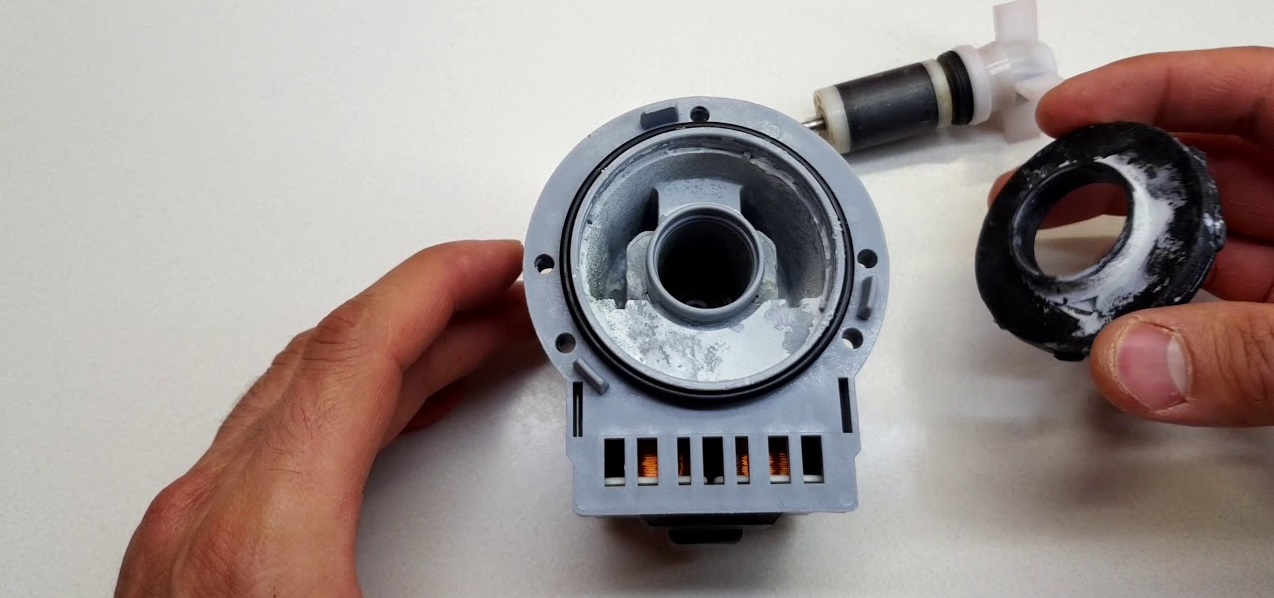
“Pumping stations” also differ in the type of filtration. Pumps are usually equipped with spiral filters. Their main disadvantage is that when clogged, the liquid stagnates inside the part and begins to smell bad. In this situation, you have to disassemble the body, pull out the nozzle and clean the element from accumulated dirt.
The drain pump consists of a plastic casing, a rotor, an impeller, a pair of windings and a core magnet.
The operating principle of the pump is quite simple. It functions like an asynchronous engine - it contains moving and static elements. The pump starts after receiving the corresponding signal from the electronic board. The algorithm of action is as follows:
- the control module gives the start command;
- the rotor (cylinder-shaped magnet) begins to rotate;
- the pump impeller is driven (it is fixed to the shaft);
- The impeller blades set the desired direction of movement of the pumped water.
As for the core magnet and a pair of windings, they remain static. These elements help the system function.
This is how the simple drain pump that is installed on ElG washing machines is started. Due to the simple design, such parts rarely break. Typically, problems occur due to a blockage formed inside the housing or a breakage of the impeller impeller. The magnetic core weakens less often.
Circulation pumps are able to pass liquid only in one direction, pushing it “out”. Such elements are found on more modern LG washing machines. On expensive models, the pump is additionally equipped with a rubber seal. The cuff covers the fitting and eliminates the possibility of water getting into the drum bearings.
Modern circulation "pumping stations" have a rotor shaft that passes through a central rubber bushing. The structure is additionally treated with moisture-resistant lubricant. The sealant fills all possible gaps, thereby ensuring smooth and quiet rotation of the mechanism. This know-how extends the service life of the part.
Let us describe the operation of the pump
The drain pump operates every time the washing machine is started, regardless of the selected mode. If the pump does not start working, the machine will remain standing with a full tank of soapy waste water. The part is not activated immediately, but closer to the end of the cycle, before rinsing and during the spin cycle.
To understand the principle of operation of the pump, you need to remember how the “washing” process occurs. First, the user loads the laundry into the drum, pours powder into the tray and selects the appropriate washing program. After starting the device, the control module is activated. Then the following steps are performed:
- the inlet magnetic valve opens;
- water is poured into the detergent cuvette, mixing with the powder;
- soapy liquid enters the tank;
- the pressure switch controls the water level in the “centrifuge”;
- When enough water is collected, the machine starts washing.

The “pumping station” is not included in the process at the very beginning, but towards the end of the program, before rinsing, then during the spin cycle. The pump, having received a signal from the main electronic module, begins to pump out water from the tank completely or partially.
Removing soapy waste liquid from the washing machine tank occurs as follows:
- the pump is activated, the impeller is set in motion;
- water leaves the tank through the drain pipe;
- the waste liquid flows further and passes through the filter element;
- water ends up in the drain pump and flows through it;
- soapy water is removed into the sewer through the drainage hose;
- a pressure switch monitors the water level in the tank;
- when the tank becomes empty, the level sensor notifies the control module.
The pump is installed in the lower part of the washing machine body - this is necessary to ensure unhindered drainage of water from the system.
If the machine does not remove waste water from the tank, you will have to check the elements of the drain system. If the pump is clogged, cleaning it will help. When the pump burns out, it is impractical to repair it; you will have to buy and install a new part.
Interesting:
Reader comments
- Share your opinion - leave a comment
Categories
Washing machine repair


For buyers

For users

Dishwasher

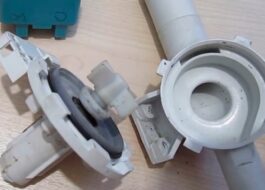
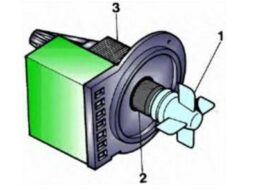
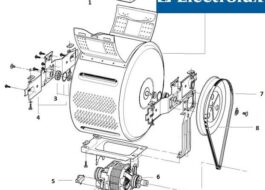
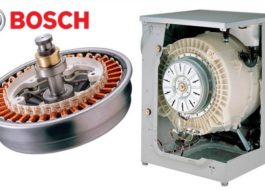
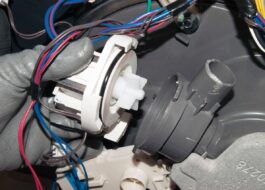
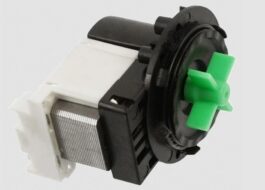










Add a comment